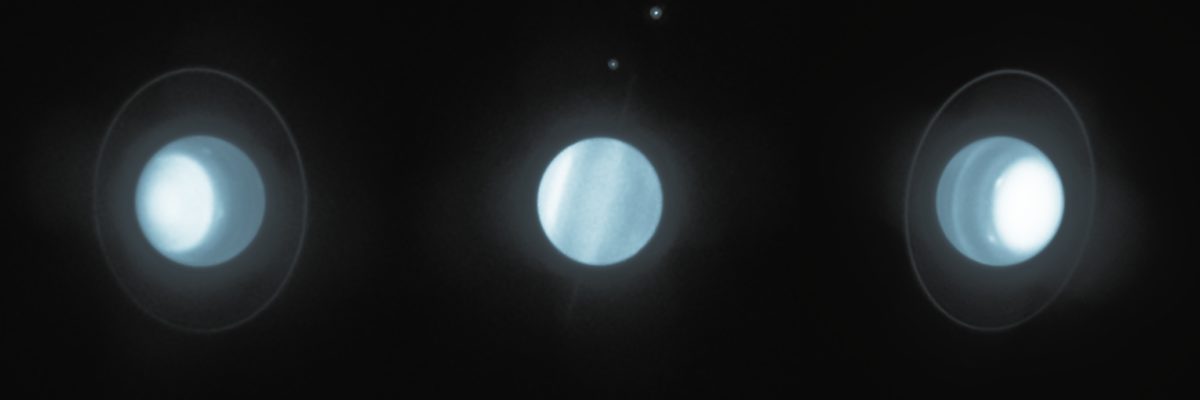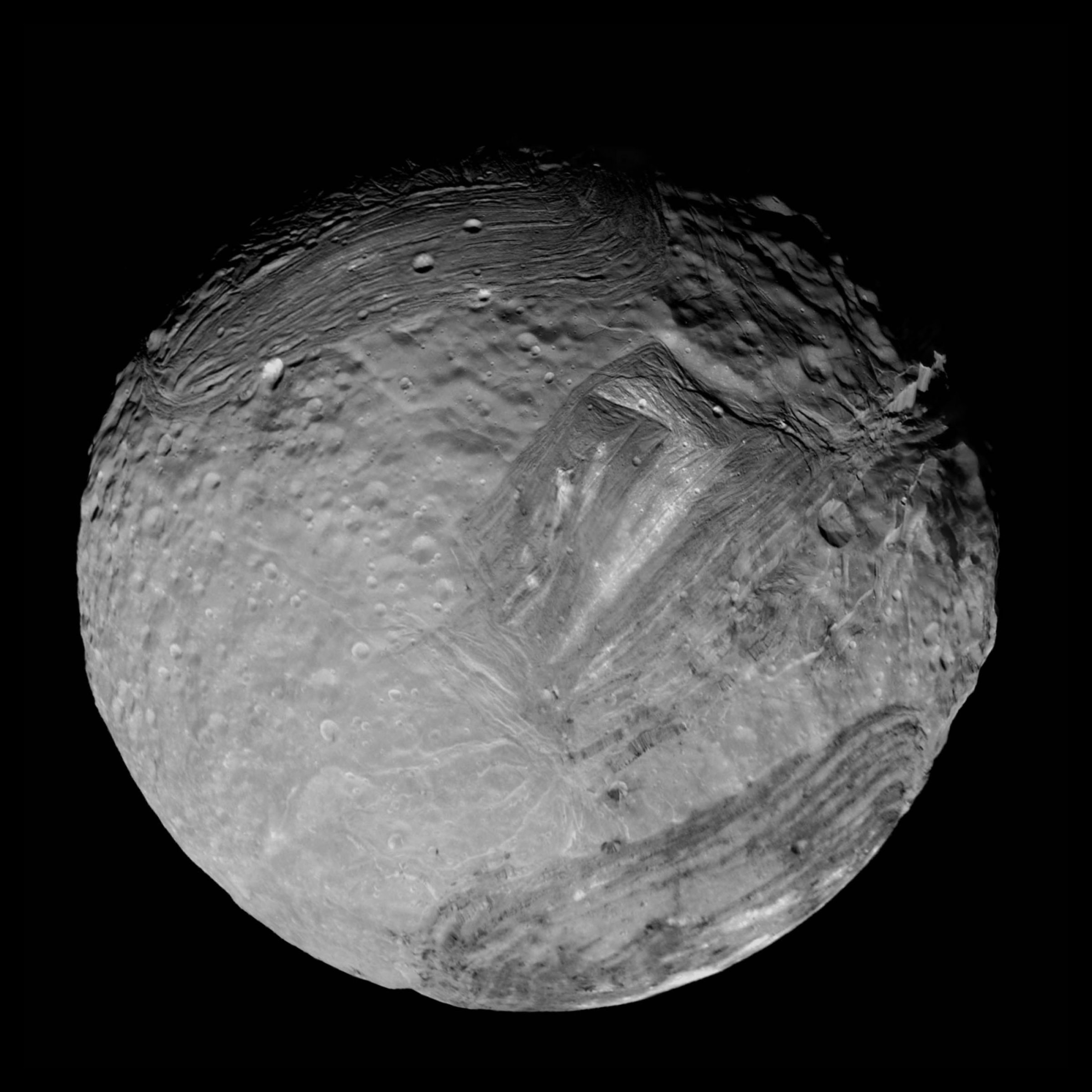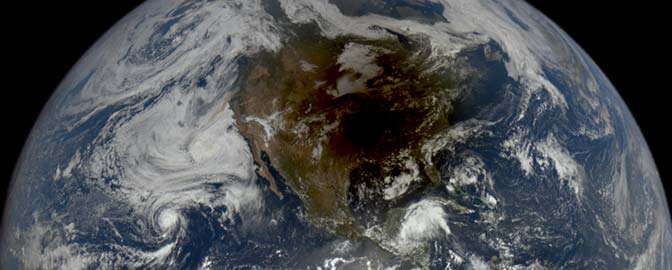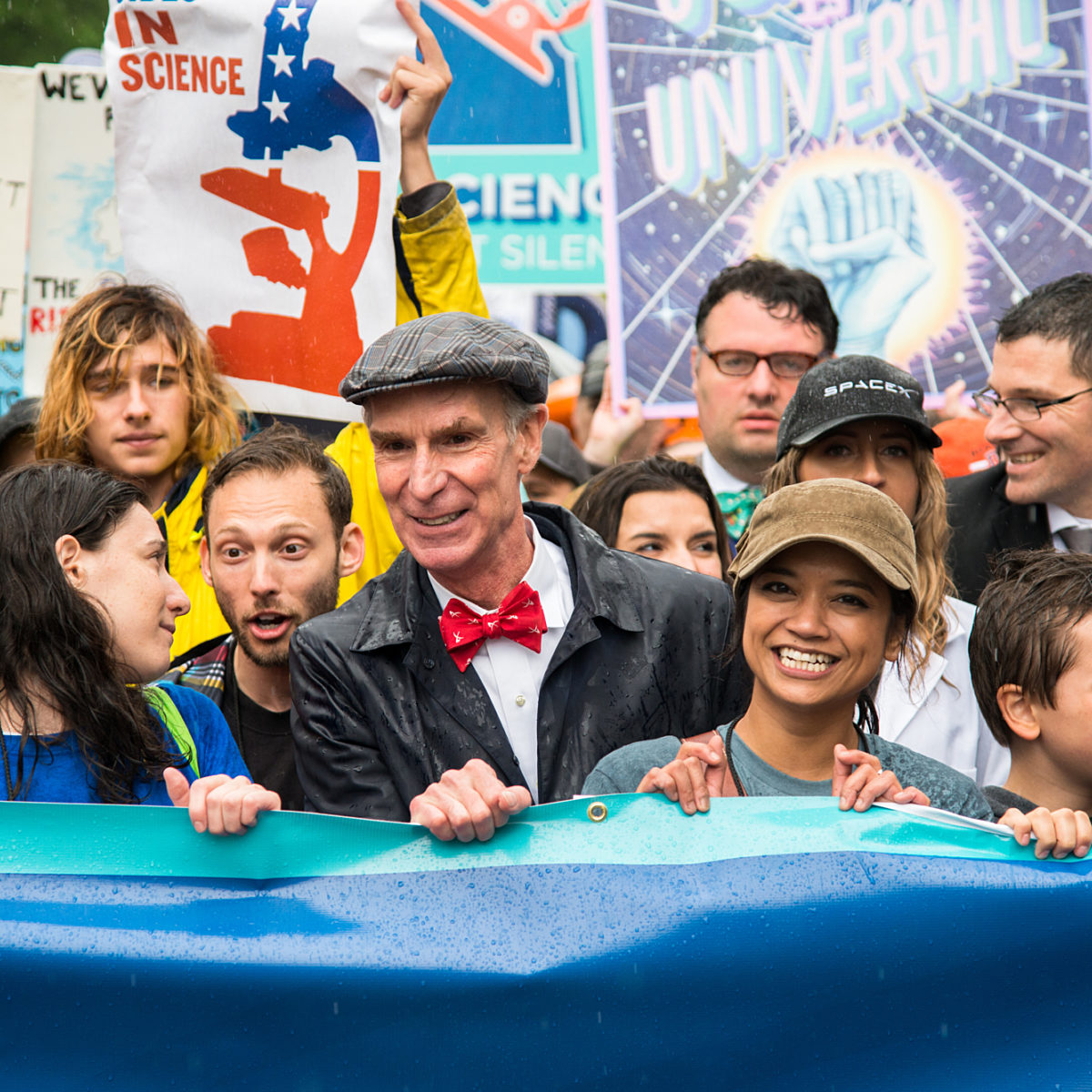Uranus, the sideways planet
Highlights
- Uranus, the seventh planet from the sun, is a cyan-colored world tipped on its side boasting rings and 27 known moons.
- Uranus-sized worlds are common around other stars, so studying the planet helps us understand other solar systems and whether or not ours is unique.
- We aren’t sure where Uranus formed or where it got its water.
Why we study Uranus
There’s no getting around it: for English speakers, Uranus is the butt of all planet jokes. But there’s much more to this world than potty humor. Like its cousin Neptune, Uranus has only been visited by one spacecraft. Yet most of the planets we’ve found around other stars are Uranus and Neptune-sized, so learning this mysterious world teaches us about other solar systems and whether our own is unique.
Uniquely among our planets, Uranus and the orbits of its rings and moons float through space sideways. How this happened isn’t known for sure. Another large world could have crashed into the planet long ago, or a larger, previous ring system could have caused Uranus to wobble and tip over. Figuring out what happened would give scientists important insights into how planets evolve.
Uranus’ atmosphere is mostly hydrogen and helium like Jupiter and Saturn, with traces of methane that absorb red light and give the planet its cyan appearance. Beneath the atmosphere is an exotic slush of partially frozen water, ammonia, and methane. For this reason, we call Uranus an ice giant, even though the ice isn’t like anything you’d put in your drink: super-compressed ice can reach temperatures of thousands of degrees!
Uranus lies 20 times further from the sun than Earth. At this distance, the disk of gas and dust that formed our solar system 4.5 billion years ago was probably too thin to form Uranus. Like Neptune, Uranus was probably born closer to the sun before migrating outward. Piecing together what happened would tell us what the early solar system was like before life arose on Earth.
Uranus’ five largest moons in order of ascending size are Miranda, Ariel, Umbriel, Oberon, and Titania. The latter two may be warmed enough by gravitational tugs from Uranus and other moons to create liquid water beneath their surfaces. Investigating this possibility would help us learn about the possibilities for life far outside the habitable zone, the not-too-hot, not-too-cold region around stars where liquid can exist on planetary surfaces.

Uranus Facts
Average temperature: -195°C (-320°F) where atmospheric pressure equals sea level on Earth
Average distance from Sun: 2,873 million kilometers (1,785 million miles), or 19 times farther from the Sun than Earth
Diameter: 51,118 kilometers (31,763 miles), Uranus is 4 times wider than Earth
Volume: 68 trillion km3 (16 trillion mi3), Earth could fit inside Uranus 68 times
Gravity: 8.7 m/s², or 89% that of Earth’s
Solar day: 17 Earth hours
Solar year: 30,687 Earth days
Atmosphere: 83% hydrogen, 15% helium, 2% methane and other gases
How we study Uranus
Like Neptune, only one spacecraft has ever visited Uranus. Missions to the outer planets require long travel times, which typically means higher costs. The only spacecraft ever to visit Uranus was Voyager 2, which launched in 1977 and used a rare planetary alignment that only happens every 175 years to visit all four outer planets.
When Voyager 2 swung by Uranus in 1986, it discovered new moons and rings and measured the planet’s magnetic field. Because the moons’ orbits sat sideways compared to Voyager 2’s trajectory, the spacecraft only got a close look at Miranda, revealing a world scarred by grooves and divots and boasting what could be the tallest cliff in the solar system.
With no new Uranus missions since, scientists have been relying on ground-based telescopes and the Hubble Space Telescope to monitor the planet. Hubble has tracked the planet’s changing seasons for years, while recent ground images have provided new insight into the planet’s weather patterns.
The 2023-2032 Planetary Science Decadal Survey — a report produced every 10 years by the U.S. scientific community to guide future NASA missions — recommends sending a spacecraft to Uranus as the highest priority. If commissioned, the Uranus Orbiter and Probe (UOP) mission will paint us a clear picture of where and how Uranus formed, and how it subsequently evolved. Because of the two ice giants' similarity, these insights would also likely apply to Neptune. The mission would also provide us with missing information necessary to understand the migration of the gas giants and the connected evolution of our solar system and early Earth.
In the best-case scenario, UOP could launch on a SpaceX Falcon Heavy rocket in 2031 or 2032 and reach Uranus 12 to 13 years later. There’s strong international interest in the mission too. The 2021 report of ESA’s Voyage 2050 Senior Committee recommends that the agency contributes to an ice giant mission led by an international partner, similar to how ESA provided the Huygens landing probe to Saturn’s moon Titan as part of Cassini.

Action Center
Whether it's advocating, teaching, inspiring, or learning, you can do something for space, right now. Let's get to work.


 Explore Worlds
Explore Worlds Find Life
Find Life Defend Earth
Defend Earth


